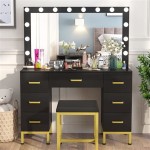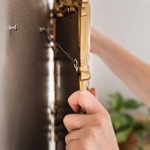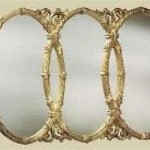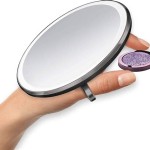Determining the Ideal Mirror Size for Dining Room Wall Art
Mirrors, when strategically incorporated into interior design, can significantly enhance the ambiance and perceived size of a dining room. Selecting the appropriate mirror size for dining room wall art involves considering several factors, including wall dimensions, furniture placement, the room's overall style, and the desired visual effect. A well-chosen mirror can create the illusion of a larger space, amplify natural light, and serve as a focal point, contributing to an inviting and aesthetically pleasing dining environment.
The process of selecting a mirror size should not be arbitrary. It requires careful assessment of the room's characteristics and a clear understanding of the design objectives. A mirror that is too small may appear insignificant and fail to make a meaningful impact, while one that is too large may overwhelm the space and disrupt the room's balance. Therefore, a thoughtful and measured approach is essential to ensure the mirror complements the dining room's existing elements and achieves the intended design goals.
Key Point 1: Assessing Wall Space and Furniture Placement
The available wall space is the primary determinant of the appropriate mirror size. Before making any purchasing decisions, the wall should be measured accurately. This measurement will provide a baseline for determining the maximum and minimum dimensions for the mirror. Consider the overall shape of the wall as well. A long, narrow wall might be better suited for a horizontal mirror, while a taller, narrower wall could accommodate a vertical mirror more effectively.
Furthermore, the placement of furniture, such as a sideboard, buffet, or dining table, influences the size of the mirror. When placing a mirror above furniture, it is crucial to maintain a proportional relationship. A general guideline is that the mirror should be no wider than the furniture it is placed above. Ideally, the mirror's width should be approximately two-thirds to three-quarters of the furniture's width. This ensures a visually balanced and harmonious arrangement.
The height of the ceiling also plays a role in selecting the mirror size. In rooms with low ceilings, a taller mirror can create the illusion of greater height. Conversely, in rooms with high ceilings, a wider mirror might be more appropriate to visually ground the space. The objective is to create a sense of proportion and prevent the mirror from appearing disproportionately small or large relative to the overall dimensions of the room.
Consider also leaving adequate space around the mirror on the wall. Avoid positioning the mirror too close to the ceiling, floor, or adjacent walls. This buffer space allows the mirror to breathe and prevents it from looking cramped or crowded. A well-positioned mirror will appear as an intentional and integral part of the room's design, rather than an afterthought.
Key Point 2: Determining Desired Visual Impact and Functionality
The desired visual impact of the mirror significantly influences the size selection. A large mirror can serve as a bold statement piece, drawing attention and creating a dramatic focal point. In contrast, a smaller mirror might serve a more subtle purpose, enhancing natural light and adding a touch of elegance without overwhelming the space. The choice depends on the overall design aesthetic and the desired level of visual prominence.
Beyond aesthetics, the functionality of the mirror should also be considered. If the primary purpose of the mirror is to reflect light and brighten the room, a larger mirror will generally be more effective. A larger surface area allows for greater light reflection, thereby maximizing the illumination of the space. This is particularly beneficial in dining rooms that receive limited natural light.
Consider the view that will be reflected in the mirror. Ideally, the mirror should reflect an attractive or visually interesting aspect of the room or a nearby space. Avoid positioning the mirror in a way that reflects clutter or undesirable elements. Strategically reflecting a window or a decorative element, such as a chandelier or a piece of art, can enhance the room's aesthetic appeal and create a sense of depth and spaciousness.
The shape of the mirror can also contribute to the desired visual effect. A round or oval mirror can soften the lines of a rectangular dining room, while a rectangular or square mirror can reinforce the room's geometry. The choice of shape should complement the overall design style and the existing furniture in the room. Experimenting with different shapes can help determine which best suits the space and achieves the desired visual impact.
Key Point 3: Considering Room Style and Mirror Proportions
The dining room's style should guide the selection of the mirror size and shape. In a formal dining room, a large, ornate mirror with an elaborate frame might be appropriate. This type of mirror can add a touch of grandeur and sophistication to the space. Conversely, in a more casual or modern dining room, a simpler, frameless mirror or one with a minimalist frame might be more suitable. The mirror should complement the room's overall aesthetic and not clash with the existing design elements.
The proportions of the mirror should be carefully considered in relation to the other elements in the room. A mirror that is too tall and narrow can appear awkward, while one that is too short and wide might look squat and disproportionate. It is essential to strike a balance and ensure that the mirror's dimensions are in harmony with the surrounding furniture and architectural features. Using painter's tape to mark the desired size and shape on the wall can be a helpful way to visualize the mirror's impact before making a purchase.
Think about the mirror's frame. A thick, ornate frame can make a mirror appear larger than it actually is, while a thin, minimal frame can allow the mirror to blend seamlessly into the background. The choice of frame should complement the room's style and the mirror's overall design. Consider the color and material of the frame as well, ensuring that it coordinates with the other finishes and textures in the room.
Finally, consider the impact of multiple mirrors. While a single, large mirror can be a powerful statement piece, a grouping of smaller mirrors can also be effective in creating visual interest and enhancing light reflection. This approach allows for greater flexibility in terms of size and placement. When using multiple mirrors, it is important to maintain a sense of cohesion and balance. Choose mirrors that are similar in style and size, and arrange them in a way that is visually appealing and harmonious.
Ultimately, the ideal mirror size for a dining room is dependent on a constellation of factors. Careful consideration of the wall space, furniture placement, desired visual impact, room style, and mirror proportions is crucial for achieving a successful and aesthetically pleasing outcome. By taking a thoughtful and measured approach, it is possible to select a mirror that enhances the dining room's ambiance, reflects light and beauty, and contributes to a welcoming and well-designed space.
:strip_icc()/dining-room-mirror-ideas-1-ashley-montgomery-b90b98cab74443e9ab4f9d5e9f6ac2d2.jpeg?strip=all)
17 Dining Room Mirror Ideas That Ll Dress Up Your Walls

Transform Your Dining Room With A Mirror Decoholic

The Best Dining Room Mirror Ideas Zhush

Transform Your Dining Room With A Mirror Decoholic

The Best Dining Room Mirror Ideas Zhush

Transform Your Dining Room With A Mirror Decoholic

Best Dining Room Mirror Ideas For An Appealing Look Opple House

6 Clever Ways To Decorate With Mirrors

Transform Your Dining Room With A Mirror Decoholic

Best Dining Room Mirror Ideas For An Appealing Look Opple House







